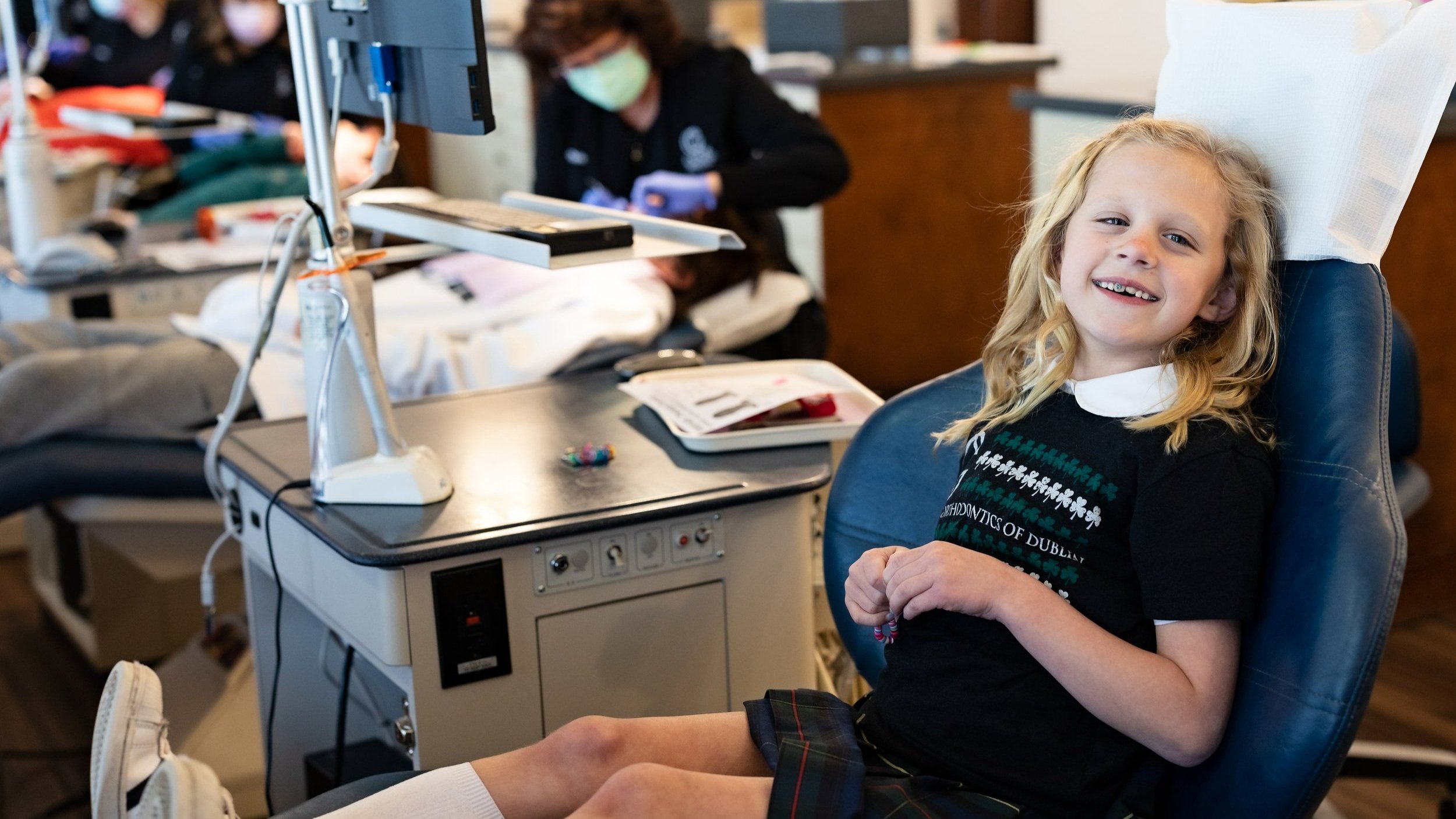
Services for Children
You may wonder why children are being treated orthodontically at a much younger age than when you remember having braces. There are several reasons why that is the case and significant long term benefits to treating children while they have a lot of growth left. Here are some reasons why:
The opportunity to help jaws grow wider than they would on their own reducing the need for extraction of permanent teeth
Breaking habits such as thumb and finger sucking which can adversely affect tooth eruption
Shorter time in fixed appliances as a teenager
Increased nasal airway and better breathing
Correcting jaw discrepancies using growth to avoid surgical correction as an adult
The American Academy of Orthodontists recommend children been seen no later than age 7 for their first orthodontic exam. Orthodontic appliances can be used to make space for permanent teeth before they come in reducing the need to extract permanent teeth. Crowding, crossbites, deep bites, overbites and underbites can begin to be corrected as children grow to avoid long term wear, irregular jaw growth, impacted permanent teeth, loss of permanent teeth and even surgery.
Interceptive treatment is a two-phase approach. Phase 1 treatment is done when children are growing and have a mix of primary (baby) teeth and permanent teeth and can include some of the following:
Palate expanders (for narrow jaws, crossbites and crowding)
Headgear (for overbites)
Facemasks (for underbites)
Bite plates (deep bites)
Phase 2 is what you typically think of as teenage braces and occurs when the last baby tooth is lost. This includes a full set of fixed braces, specifically Damon brackets. Phase 2 treatment is more focused on alignment and bite correction of permanent teeth with Damon braces. Treatment with Damon braces result in a broader, more natural smile with shorter treatment times than conventional braces. Phase 2 can include appliances such as a Carriere Appliance for moderate overbites or a Herbst appliance for severe overbites due to a deficient lower jaw.
Not every child requires a two-phase approach and can be treated in one comprehensive phase. In this case, children are placed in our growth and observation program at no charge and are seen every 6 months for observation appointments to monitor the growth and development of permanent teeth so issues can be addressed as they arise. Scheduling a complimentary new patient consultation is the best way to find out what approach is best for your child. Click below to schedule your new patient appointment.
Did you know?
Agriculture is why so many people need braces.
Braces have become so commonplace in the U.S. that wearing them is almost a rite of passage; data suggests that about 50% of children in the U.S. will need orthodontic treatment at some point, mostly due to misaligned teeth. But that wasn’t always the case.
The advent of agriculture changed the human diet, which led to a smaller jaw that no longer has enough space to provide a comfy home for all 32 teeth. Before humans took to the plow around 10,000 BCE, our hunter-gatherer predecessors chowed down on tougher foods, such as uncooked vegetables and hard-shelled nuts, and needed bigger, stronger jaws to munch through them.
When farming introduced softer foods into our diet, such as beans and cereals, the need for those beefy jaws declined. Our jaws got smaller over the generations, but human teeth shrank at a much slower rate, resulting in the dental traffic jam experienced by millions of Americans every year.
In 2015, to test whether the rise of agriculture led to our species’ crooked teeth, scientists from University College Dublin analyzed the lower jaws of 292 skeletons ranging from 28,000 to 6,000 years old. The results were clear: Hunter-gatherers sported larger jaws, especially lower jaws, than their farming descendants only a few thousand years in the future. And our mouths weren’t the only body part impacted by Homo sapiens’ more sedentary existence. Additional studies show that humans developed lighter and less dense bones around joints due to a changed diet that reduced calcium intake and a less-active lifestyle brought on by the switch from foraging to farming.
Credit: HistoryFacts.com
Ready to take the next step?
Contact our Dublin, Ohio office today to schedule a consultation and learn more about what we offer our patients.

Ready For Special Cases
Dr. Cook and his staff’s combined years of education, training and experience in orthodontics have prepared them to excel in cases within a wide range in level of difficulty. Prospective patients seek out our knowledge and experience when they have been told from other offices that their case is too difficult to be treated at that office. Whether it is early intervention in children with severe overbites, underbites or crowding to adults with surgical or comprehensive restorative needs, we feel confident that we can find a solution together.


